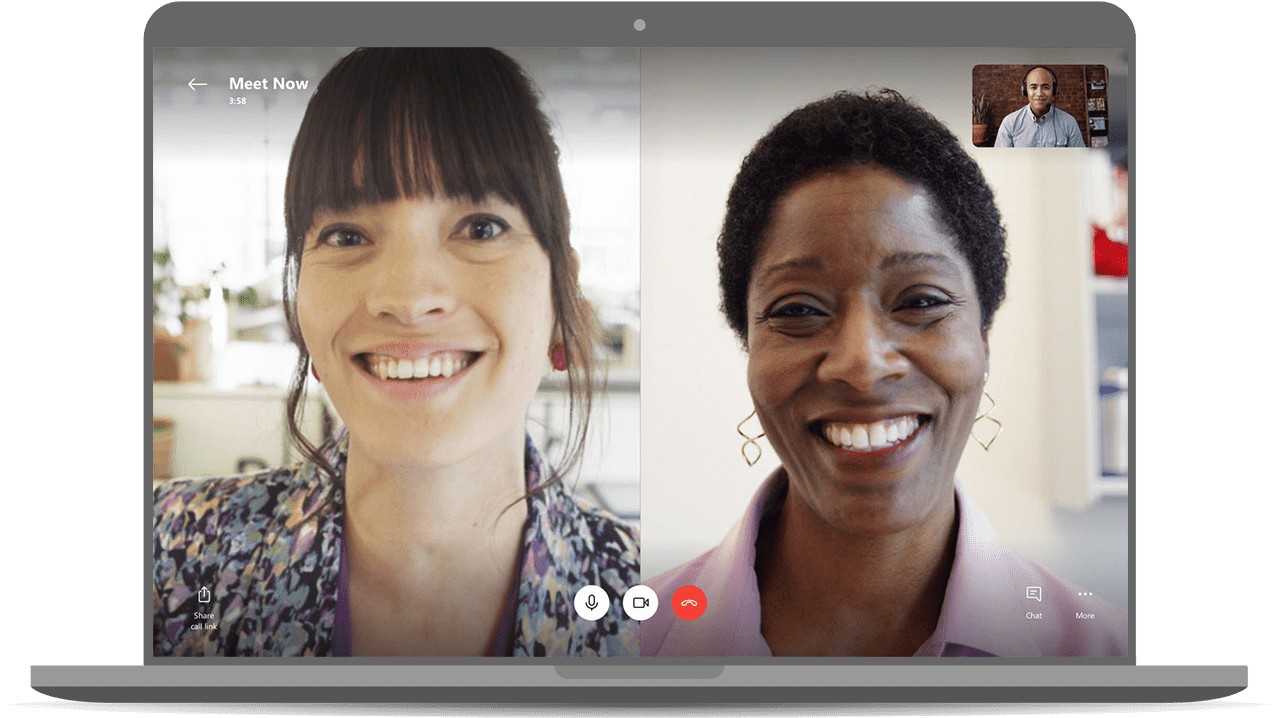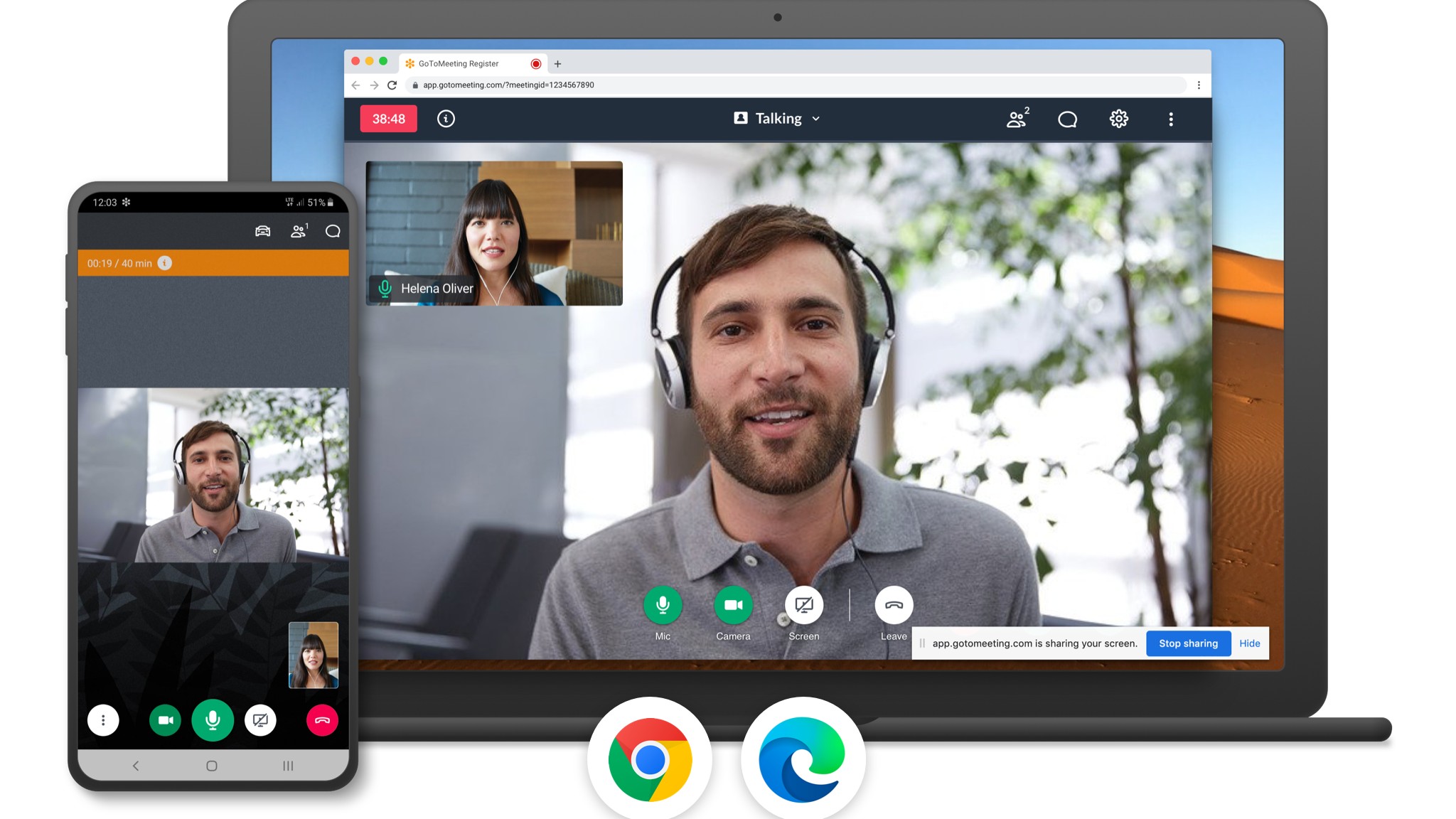Video conferencing is nothing new, and certainly not for those working in the creative industry. But the last couple of months have transformed it from an optional tool to one that's essential, helping to keep businesses running as much of the world's workforce works from home.
There are lots of great video conferencing tools available, many of which are helpfully built-in to our everyday devices. But have you ever stopped to consider whether your default video conferencing tool is really the best one for your needs?
Here, we bring together the seven best video conferencing tools around right now (in no particular order), and highlight the strengths and weaknesses of each. Each of them has either a free version or a free trial so you can give them a go before committing to buy.
If you need to record your video calls, don't miss our round up of the best video editing software to help you give it that polished, professional look.
01. Zoom

- Pros: Up to 100 people free; customisable backgrounds
- Cons: Free meeting only 40 minutes; security issues
Downloads and use of Zoom have exploded since lockdown began, from everyone to friends catching up to governments holding cabinet meetings. It’s not entirely obvious why, because most of its features are matched or exceeded by other apps, including those on this list. But anecdotal evidence suggests that people simply find Zoom easy to use, robust and dependable. That’s difficult to measure scientifically right now, with broadband speeds and connectivity being such a postcode lottery from day to day, but there’s something to be said for the wisdom of crowds.
The free version of Zoom allows you to invite up to 100 people to your meeting, and up to 49 can appear on screen, which is not to be sniffed at. Attendees can join via the app, their web browser or a traditional phone call. You can hold unlimited meetings, with video up to 720p quality; you can record your meetings locally; and there’s 24/7 online support. If you want to add a touch of colour and fun to your meetings, you can also add Zoom backgrounds, which are becoming something of a cultural trend right now.
There are, however, two big issues with Zoom. The first is that under the free plan, meetings can only last a maximum of 40 minutes. (That, of course, might be seen as a benefit rather than a drawback, preventing lengthy meetings eating into your day). The second is the number of security issues associated with Zoom, most notably the problem of ‘Zoom bombing’, where uninvited trolls disrupt meetings, often using obscenity and racist language.
Get the Creative Bloq Newsletter
Daily design news, reviews, how-tos and more, as picked by the editors.
In recent weeks, Zoom has been scrambling to tighten up these security issues, and introduced new measures such as introducing password-protect entry to meetings. However, their efforts haven’t come soon enough to prevent many governments and large companies from banning its use.
02. Skype Meet Now

- Pros: Unlimited meeting time; blur backgrounds
- Cons: Only 50 people under free plan
One of the original video chat apps, Microsoft’s Skype is still going strong, and the main benefit of using the platform for videoconferencing, to be frank, is that most invitees will be familiar with it. But that’s not all it has going for it.
Skype Meet Now offers some excellent video conferencing features, even in its free tier. These include group calls to up to 50 people, screen sharing options, and most notably, the ability to automatically blur backgrounds. You can also record calls, and add live subtitles to conversations. Attendees can access Skype via the web browser, or the dedicated desktop and mobile apps.
Also note that if you’re an Office 365 user, then you’ll also get access to Skype for Business, which allows you to invite up to 250 people, includes 24/7 phone support, and has some nice integrations with the Office 365 suite.
03. Google Hangouts

- Pros: Easy to use; free
- Cons: Light on features; only 10 people
One of the companies to recently ban Zoom use internally has been Google, and that’s not hugely surprising, because it has its own platforms for videoconferencing already. For starters, you can conduct video calls with up to 10 people via it's own free IM platform, Google Hangouts.
Nicely integrated into all the other main Google apps, such as Gmail and Google Calendar, Hangouts is very easy and intuitive to use, which means you can set up a meeting and start chatting to people with just a few clicks, either in your web browser or via the Android, iOS or Chrome apps. It doesn’t have many advanced features, but on the plus side, this keeps the interface really simple and easy to use.
04. Google Meet

- Pros: Up to 100 people; invitees can phone in or Skype
- Cons: Lacks some advanced features
If you like Google Hangouts but want some more advanced videoconferencing features, then Google also offers Google Meet for users of G Suite for Business. The latter is a paid-for service, starting at $5/£3.30 per user per month.
With Google Hangouts Meet, you can invite up to 100 people, record meetings, share your screen and stream HD video. Enterprise customers can record meetings to Google Drive and enable live-stream viewing to up to 100,000 viewers. Attendees can access your meeting via the web app, a special phone number, or even via rival services such as Skype for Business.
If you want try Google Hangouts Meet before committing, there's a free 14-day trial for G Suite for Business. And depending on the features you’re looking for, you may find it a cheaper option than the other paid-for tools on this list.
Update: In late April, Google announced that you no longer need to be a G Suite for Business to use Meet. Currently, anybody with a Google account can now use Meet, to create free meetings of up to 100 people that can last any amount of time. In October, however, it may restrict meeting length to 60 minutes.
05. GoToMeeting

- Pros: Business-oriented; advanced features
- Cons: Not cheap; can’t record on Starter Plan
While some apps, such as Skype and Google Hangouts, are broadly aimed at anyone wanting to organise a group chat, GoToMeeting is laser-focused on being a ‘serious’ tool for business. Supporting between 150 and 3,000 invitees, depending on your pricing plan, this service is packed with features to make your meetings organised and professional.
These include HD video, screen sharing, automatic transcription, unlimited cloud recording, whiteboard capabilities, support for note taking and 24/7 phone support. Hosts can launch meetings via their smartphones, and can even hand over control to another participant. Participants can join meetings via their browser, apps for Android, iOS or Windows Phone, or a phone call. Starting at £9.50 a month, there’s no free version of GoToMeeting, but there is a free trial.
06. Bluejeans

- Pros: Unique Dolby feature; annotation features
- Cons: Can’t blur out backgrounds; not cheap
Starting at $9.99 a month, Bluejeans is another high-end videoconferencing service aimed squarely at business users. It’s both easy to set up meetings, and to scale them with the level of complexity that meets your needs. For example, hosts can create up to 20 breakout sessions, to arrange collaborations on subtasks, and meeting recordings can be divided into chapters, with segment highlights and task assignment attached accordingly.
Also, you can not only share your screen but annotate it like a whiteboard. Uniquely, the service supports directional audio for Dolby Sound-enabled rooms. Ecryption-only access is available for improved security, and phone support is available 24/7. Meetings can be accessed via web browsers, Windows, Mac, Linux, iOS and Android, and you can host from 50-100 participants, depending on your pricing plan. There’s no free version of Bluejeans, but it is easy to set up a seven-day free trial.
07. Cisco Webex Meetings

- Pros: Professional feel; 100 people free
- Cons: Less well known than other platforms
Cisco is a major name in enterprise software, and its tools are usually very expensive. So it’s perhaps surprising that its premium quality video conferencing software, Cisco Webex, comes with a free tier. Especially as it’s one that will suit most people’s needs, enabling you to hold video meetings in HD with up to 100 people, share your screen, and even set up private chat rooms.
Meetings can be accessed via the desktop apps or the iOS and Android apps, there’s no limit to meeting length, and you can make MP4 recordings of your meetings (1GB of cloud storage is provided with the free plan). You can access meetings via your web browser, desktop apps, iOS and Android apps, or via a phone call. In short, there’s not really anything we don’t like about Cisco Webex Meetings. The only thing that might potentially count against it is that many will be unfamiliar with it.
Read more:

Thank you for reading 5 articles this month* Join now for unlimited access
Enjoy your first month for just £1 / $1 / €1
*Read 5 free articles per month without a subscription

Join now for unlimited access
Try first month for just £1 / $1 / €1

Tom May is an award-winning journalist and editor specialising in design, photography and technology. Author of the Amazon #1 bestseller Great TED Talks: Creativity, published by Pavilion Books, Tom was previously editor of Professional Photography magazine, associate editor at Creative Bloq, and deputy editor at net magazine. Today, he is a regular contributor to Creative Bloq and its sister sites Digital Camera World, T3.com and Tech Radar. He also writes for Creative Boom and works on content marketing projects.
